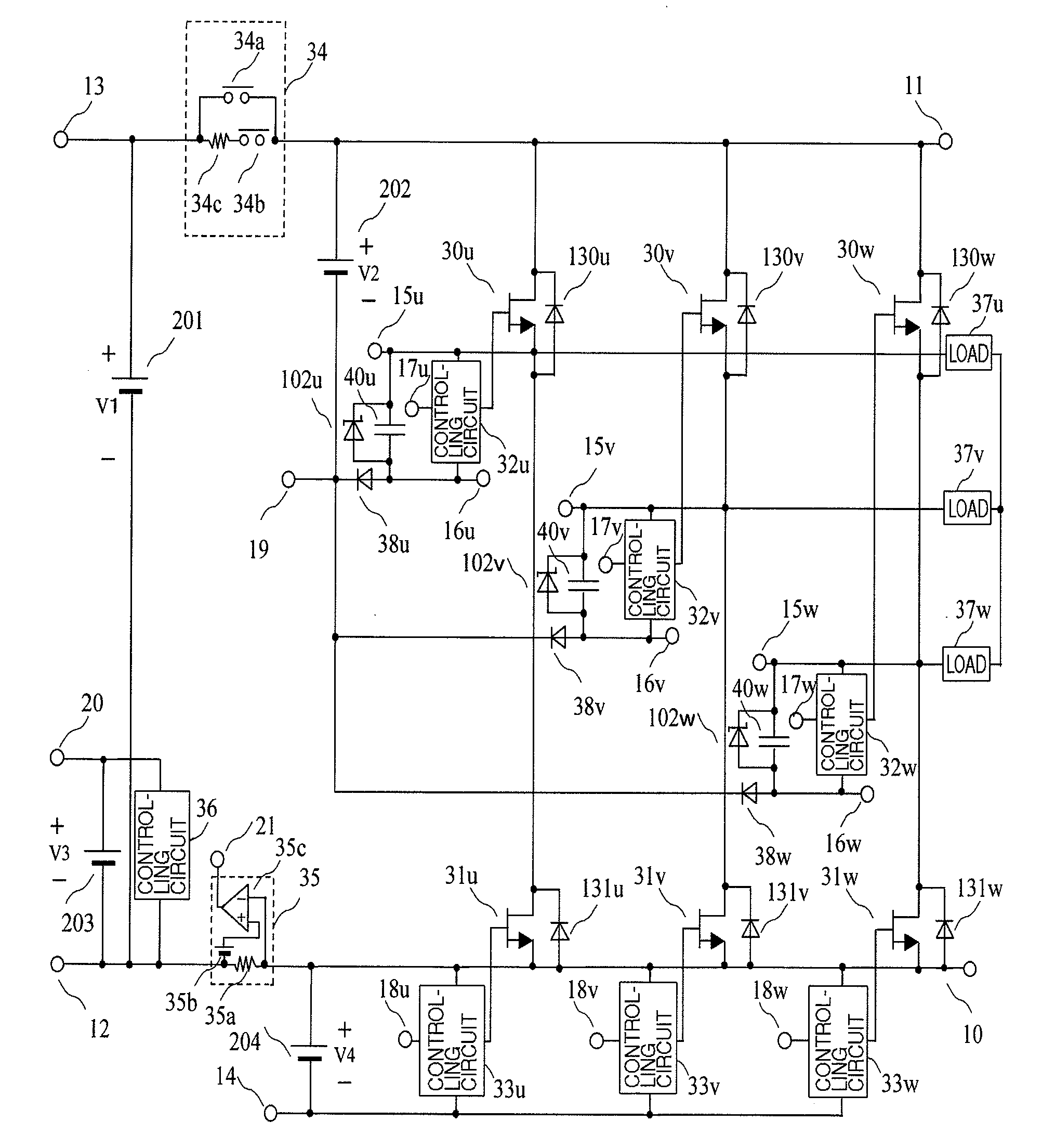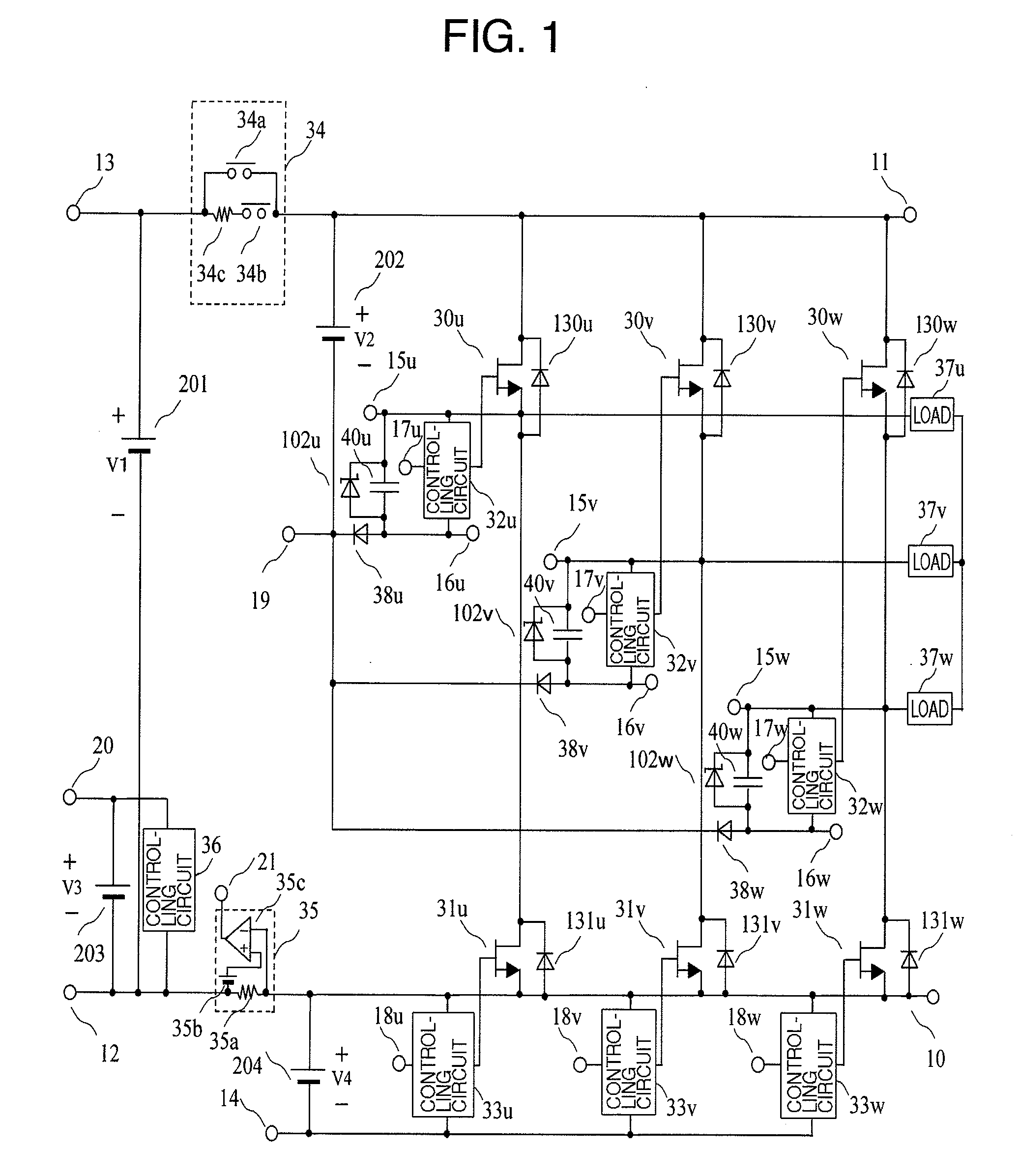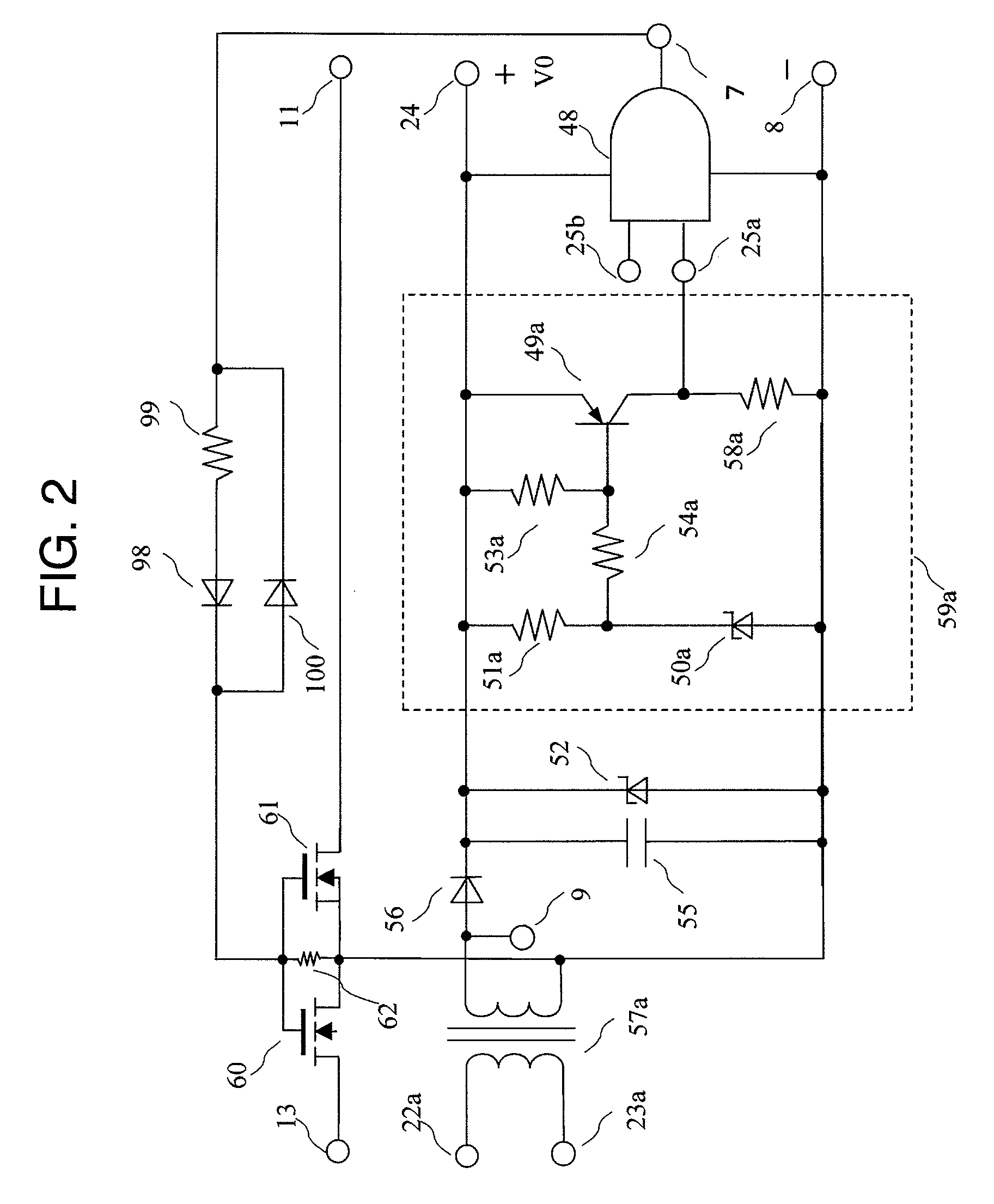Semiconductor circuit
a technology of semiconductors and circuits, applied in pulse generators, pulse techniques, instruments, etc., can solve the problems of lack of study, lack of study of charge-discharge capacitors, and inability to study methods, etc., to achieve low threshold voltage, improve reliability, and reduce size
- Summary
- Abstract
- Description
- Claims
- Application Information
AI Technical Summary
Benefits of technology
Problems solved by technology
Method used
Image
Examples
embodiment 1
[0052]FIG. 1 is a diagram for explaining a semiconductor circuit according to a first embodiment. This embodiment represents a circuit using a n-channel JFET for the upper-arm switching elements 30u, 30v, 30w and the lower-arm switching elements 31u, 31v, 31w. Nevertheless, field-effect switching elements or a bipolar transistor other than JFET such as SIT, MESFET, HFET, HEMT or accumulation type FET may be used with equal effect. This embodiment is explained taking the normally-on switching elements 30u, 30v, 30w, 31u, 31v, 31w as an example.
[0053]This embodiment represents a three-phase inverter configured of a bridge circuit wherein the upper-arm switching elements 30u, 30v, 30w are connected between the high-voltage terminal 11 and the high-voltage-side voltage terminals 15u, 15v, 15w providing output terminals, the lower-arm switching elements 31u, 31v, 31w are arranged between the high-voltage-side voltage terminals 15u, 15v, 15w providing output terminals and the reference vo...
embodiment 2
[0077]FIG. 2 is a diagram for explaining a semiconductor circuit according to a second embodiment. According to this embodiment, the high-voltage switch 34 shown in FIG. 1 is formed of normally-off power MOSFETs 60, 61 as semiconductor switching elements. FIG. 2 shows a bidirectional switch in which the normally-off power MOSFET 60 and the normally-off power MOSFET 61 are connected in series in opposite directions. As a result, the reverse flow to the input-side high-voltage terminal 13 from the high-voltage terminal 11 can be prevented at the time of turning off the high-voltage switch 34. In the case where the reverse flow prevention is not required, the normally-off power MOSFET 61 is eliminated. According to this embodiment, the voltage applied to the primary terminals 22a, 23a of the transformer 57a is transmitted to the secondary terminals 9, 8, and shaped by the capacitor 55 and the diode 56 thereby to generate the DC voltage V0 of about 10 V between the terminals 24 and 8.
[0...
embodiment 3
[0081]FIG. 3 is a diagram for explaining the semiconductor circuit according to a third embodiment. This embodiment represents a case in which the power supplies 202, 204 shown in FIG. 1 are formed of a rectifying circuit including a transformer 57a, capacitors 64a, 64b, diodes 65a, 65b and zener diodes 63a, 63b. Nevertheless, the power supplies 202, 204 may be implemented with a DC / DC power supply. In FIG. 3, numerals 59b, 59c designate a comparator circuit which, like the circuit 59a in FIG. 2, has a reference voltage equal to the breakdown voltage value of the zener diodes 50b, 50c to determine whether the power source voltages V2, V4 have reached the desired voltage level. In the state free of the effects of the parasitic inductance or the parasitic resistance of the wiring, the power source voltages V2, V4 are set to about 25V to 40 V in the case where the threshold voltage of the switching elements 30u, 30v, 30w, 31u, 31v, 31w is −20 V. Accordingly, the breakdown voltage of th...
PUM
 Login to View More
Login to View More Abstract
Description
Claims
Application Information
 Login to View More
Login to View More - R&D
- Intellectual Property
- Life Sciences
- Materials
- Tech Scout
- Unparalleled Data Quality
- Higher Quality Content
- 60% Fewer Hallucinations
Browse by: Latest US Patents, China's latest patents, Technical Efficacy Thesaurus, Application Domain, Technology Topic, Popular Technical Reports.
© 2025 PatSnap. All rights reserved.Legal|Privacy policy|Modern Slavery Act Transparency Statement|Sitemap|About US| Contact US: help@patsnap.com



